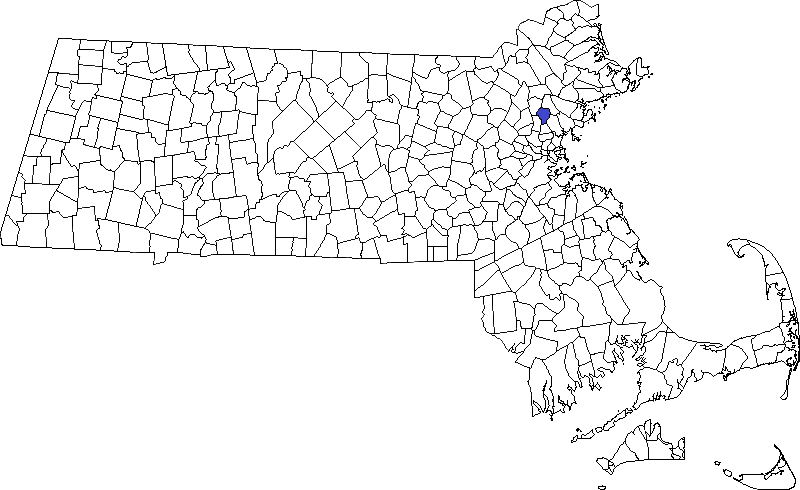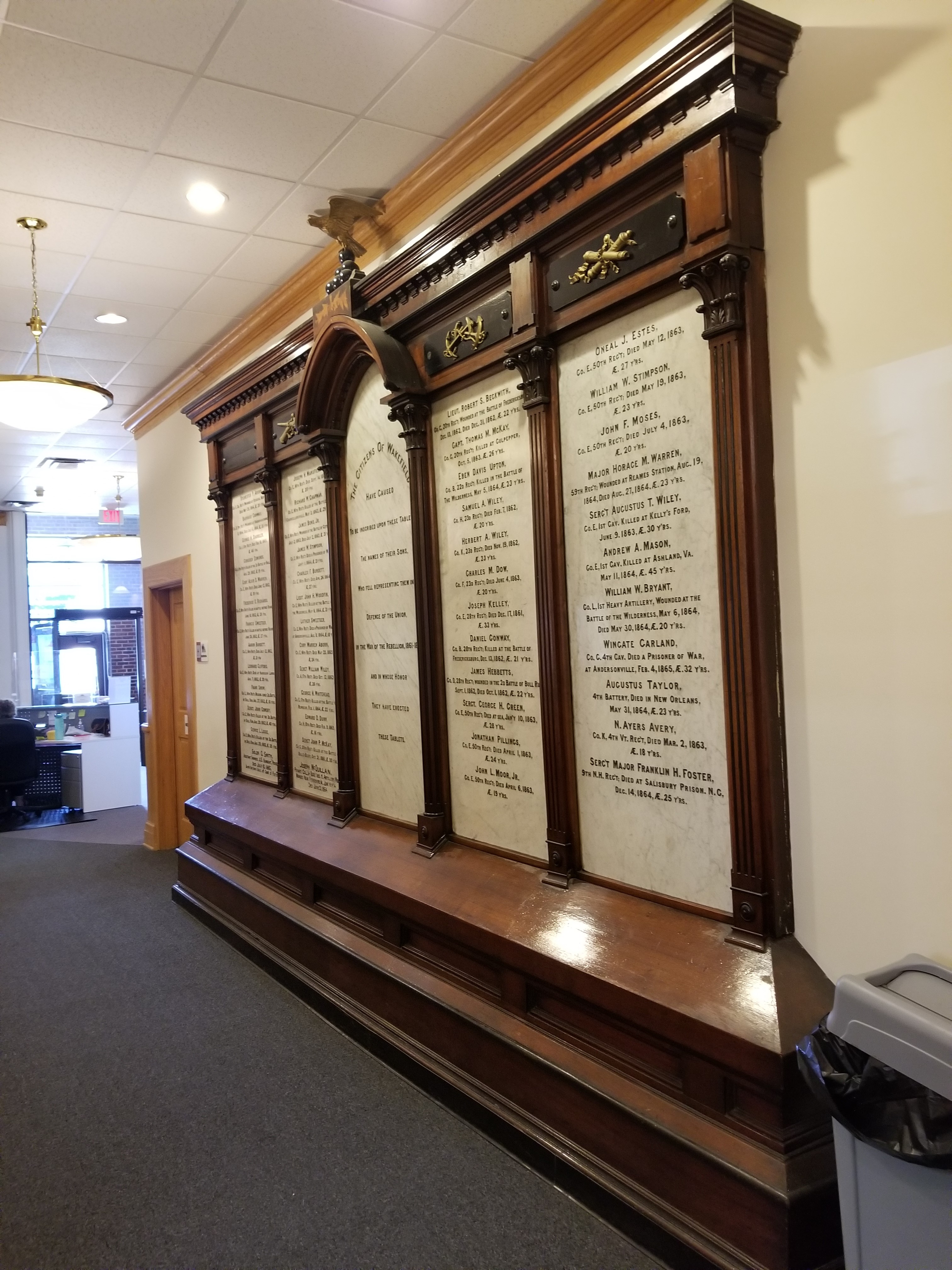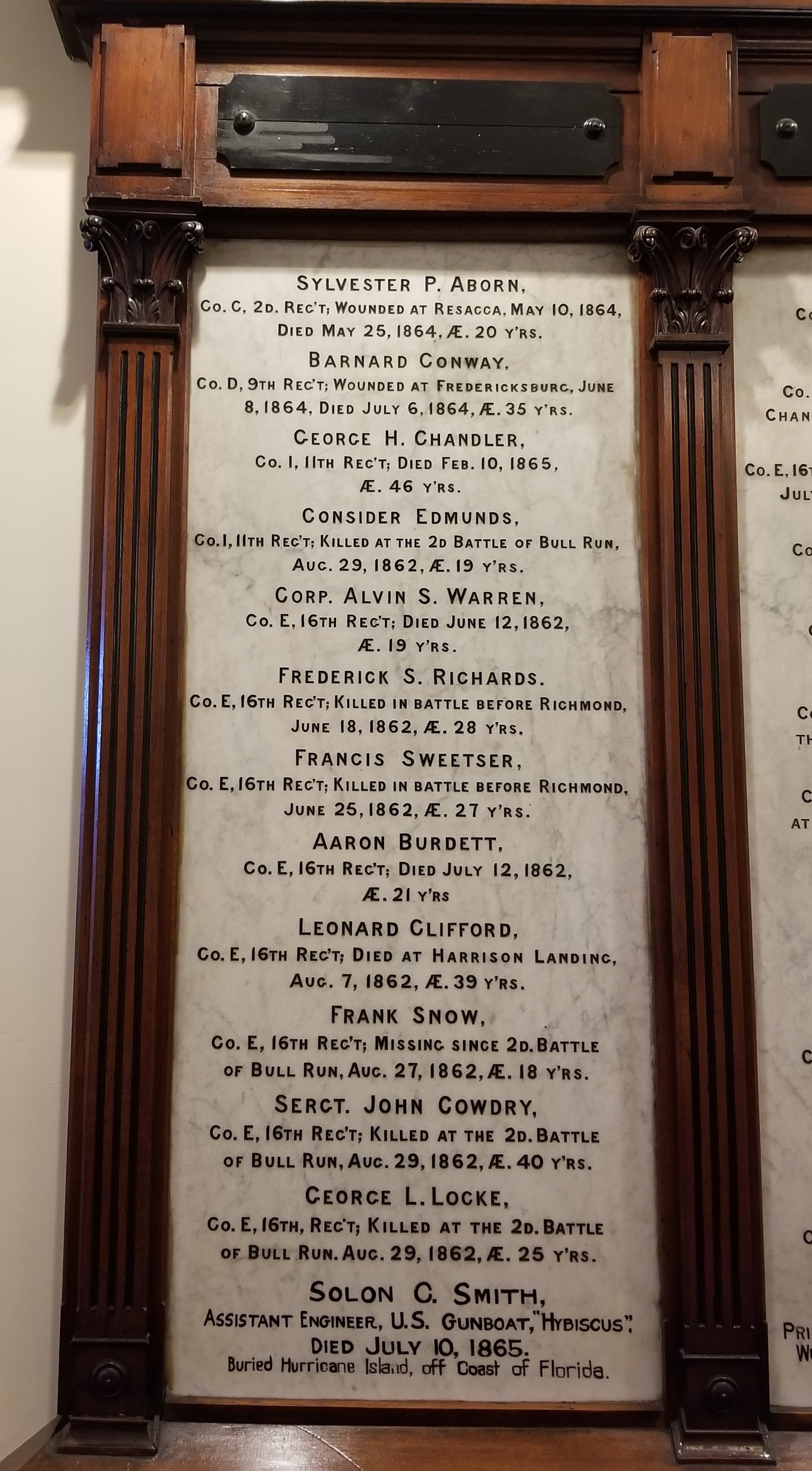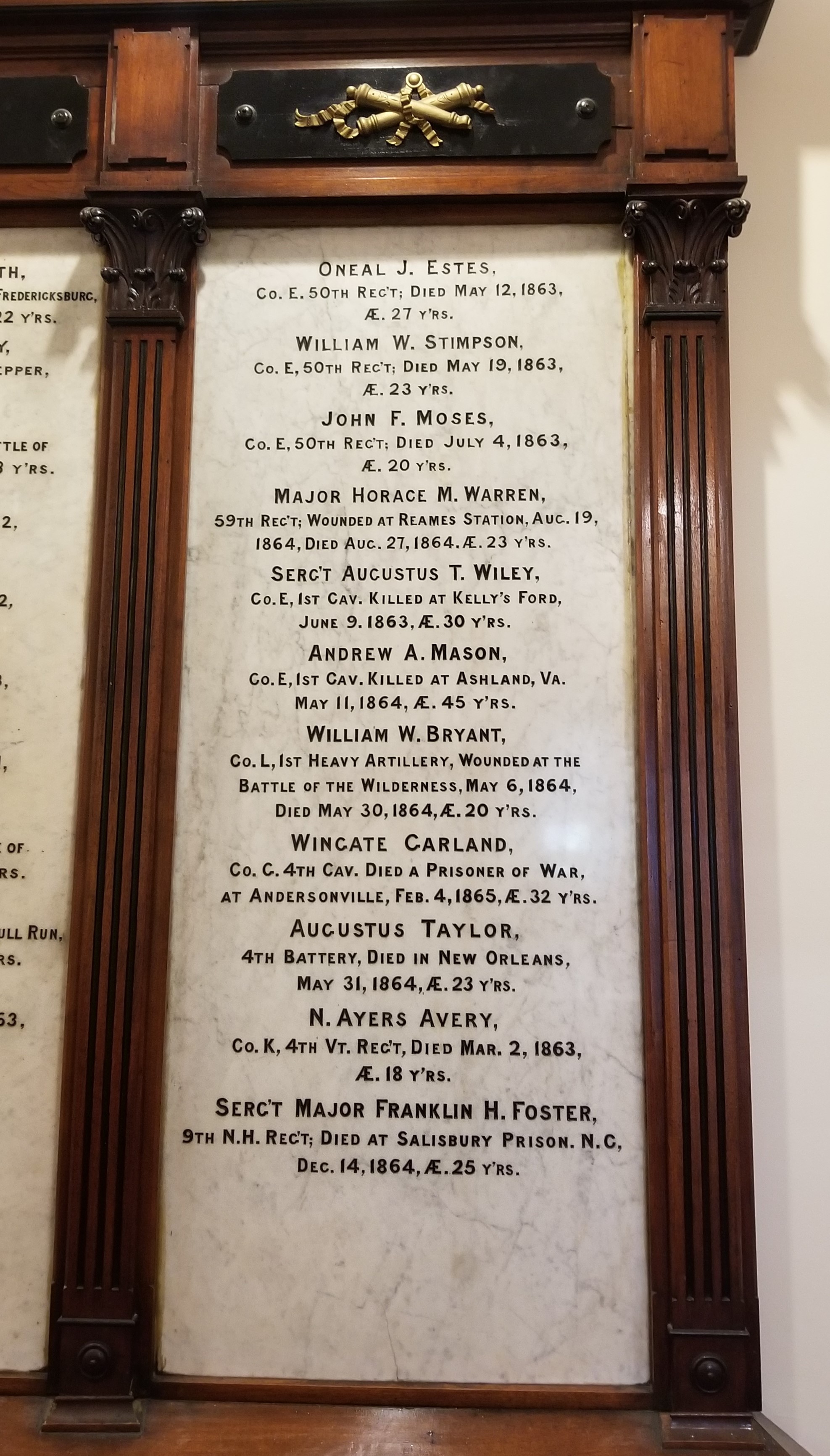

Wakefield Soldiers’ and Sailors’ Monument
Location: Upper Common, 1 Church Street, Wakefield
Coordinates: 42°30’25.1″N 71°04’19.2″W
Date dedicated: June 17, 1902
Architect/sculptor/manufacturer: Van Amringe Granite Company of Boston, manufacturer; Edward Ludwig Albert Pausch, sculptor of the color bearer; Robert D. Barr, sculptor of the infantryman
At the time of the war, Wakefield was known as South Reading. The name change took place in 1868. Mrs. Harriet Flint bequethed the majority of the cost of Wakefield’s Soldiers Monument. One of the Commonwealth’s well-known philanthropists of the time, Mrs. Flint inherited a considerable fortune from her husband and then proceeded to more than double it through energetic and wise business pursuits. She funded libraries and other public buildings in both Wakefield and North Reading, gave generously to schools, churches and veterans organizations, and established the Wakefield Home for Aged Women.[1]

Upon her death, she left more than $100,000 (the equivalent of several million today) to various charities. One of her bequests was made to the town for a monument which would, according to her will, be “symmetrical in architecture, beautiful in design and finish, attended with solid, thorough workmanship – a monument worthy of the men to whom we dedicate it.”[2]
The Van Amringe Granite Company of Boston won the contract to manufacture the monument. The company frequently worked as a sub-contractor for the Smith Granite Company of Rhode Island–one of the largest manufacturers of granite monuments in New England. For the monument in Wakefield, the Van Amringe Company obtained rights to reproduce at least two of Smith Granite’s figures from monuments on the Gettysburg Battlefield. The infantryman is a replica of the 14th New York State monument at Gettysburg by Edward Ludwig Albert Pausch, a Danish born sculptor. The uniform is altered here to be more generic as the 14th New York had distinctive garb. But otherwise the pose, gear, face, position of the rifle, even the fold of the clothing in places are identical. The color-bearer atop the column is a precise replica of the statue from the 13th Massachusetts Infantry monument at Gettysburg by Robert D. Barr. The statue represents the color bearer of the 13th Massachusetts, Sgt. Alonzo Morris. The other figures likely are reproductions of other Smith Granite monuments as well.

Wakefield Town Hall Tablets
Location: Town Hall, 1 Lafayette Street, Wakefield
Coordinates: 42°30’25.1″N 71°04’19.2″W
Date dedicated: 1871
Architect/sculptor/manufacturer:
The striking monument on the Common was not Wakefield’s first Civil War memorial. In 1868, the town (back when it was still called South Reading) decided to build a new town hall. This was made possible entirely through the generosity of Cyrus Wakefield, the town’s largest employer. He owned the highly successful Wakefield Rattan Company which manufactured rattan furniture and carriage bodies. He offered $30,000 for the construction of a town house which was to include a “soldiers’ memorial hall”. In recognition of his generosity, the town (which had been considering a name change due to the confusion over too many “Readings”) voted to change its name to Wakefield. Eventually, Mr. Wakefield would quadruple the amount of his donation resulting in a much grander structure than originally envisioned.[3]

The imposing building, beautifully ornate in the Second Empire style, was dedicated on Washington’s birthday, February 22, 1871. The memorial hall which contained the entablature sat in the center of the first floor.[4] The primary inscription reads, “The citizens of Wakefield have caused to be inscribed upon these tablets the names of their sons who fell representing them in defence of the Union in the War of the Rebellion, 1861-1865 and in whose honor they have erected these tablets.”
The old Town Hall suffered a fire in 1950 and was never fully repaired. It was demolished in 1958. The site on the corner of Main and Water Streets is now a parking lot. The tablets were salvaged and moved to the Lafayette Building, previously the town’s high school but repurposed as the “new” town hall. They were installed in this hallway where they remain today.
Click to enlarge images:
[1] Julia Ward Howe, et. al., Sketches of representative women of New England, (Boston: New England Historical Pub. Co., 1904), 124-125.
[2] Wakefield Historical Society, http://www.wakefieldma.org/soldierssailors.html
[3] Nancy Betrand, “Civil War Memorial Tablets,” Wakefield Historical Society blog, December 2, 2016; and Boston Recorder, February 6, 1868, 48.
Boston Journal, February 23, 1871, 1.






